15 Wildflowers That Grow in Florida (With Pictures)
-
Jeff Weishaupt
- Last updated:
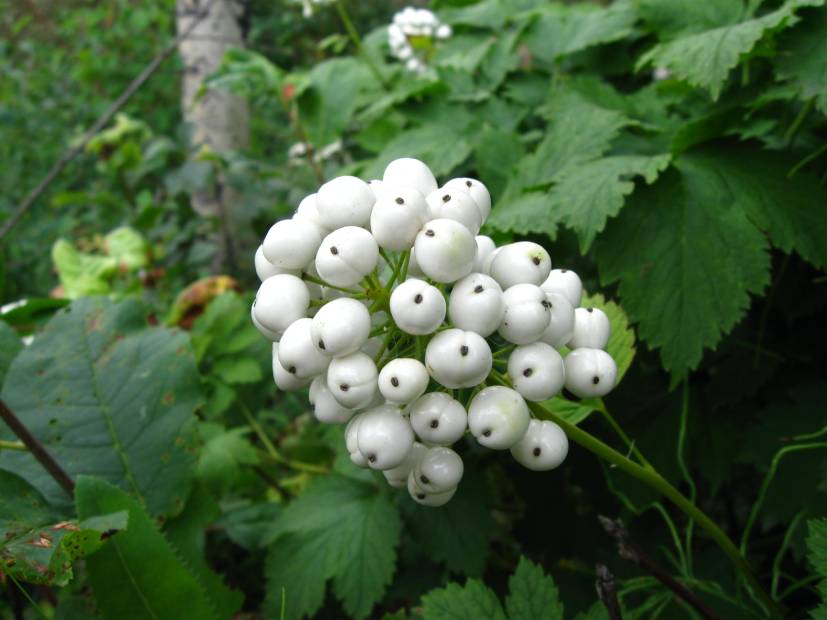
If you live in Florida, the state’s beautiful range of wildflowers is enough reason to go out and enjoy nature’s best sights. The state is home to over 300 types of wildflowers, all exhibiting vibrant shades and unique appearances.
These flowers grow along trails, roadsides, national parks, forests, and rural areas. The genus Coreopsis has been Florida’s official wildflower since 1991, which is why you may spot it all throughout the highway beautification programs and roadside plantings in the state.
If you’re interested in learning more about Florida’s wildflowers, keep reading to find out more about them.
 The 15 Wildflowers in Florida
The 15 Wildflowers in Florida
Here are the 15 most popular wildflowers grown in Florida, along with their Scientific Names, Native Family, and Other Names:
1. Adder’s Mouth Orchid

| Scientific Name | Malaxis unifolia |
| Native Family | Orchidaceae – Orchid family |
| Other Names | Green Adder’s Mouth |
The Adder’s Mouth Orchid is a fairly small plant, growing no more than 20 inches tall. This wildflower grows a few smooth, glossy leaves and has a sheathing base. Once fully bloomed, it can produce over 160 green flowers.
These flowers have a three-lobed labellum and recurved lateral petal, flowering best in spring and early summer. It’s typically found in moist habitats like swamps and bogs, but you may find some in drier woodlands and forests.
2. Baneberry

| Scientific Name | Actaea pachypoda |
| Native Family | Ranunculaceae – Buttercup family |
| Other Names | White Baneberry, Doll’s Eyes |
Baneberry isn’t one single wildflower but essentially a group of wildflowers in the buttercup family. These flowers may look beautiful and tempting, but they produce toxic berries that you must steer clear of.
Its two most common subspecies include red baneberries and white baneberries, which grow best in moist, nutrient-rich sites. These flowers can grow up to 36 inches, but red baneberries are typically smaller than white baneberries.
If you want to grow these flowers in your backyard, you must ensure your pets or children never eat them.
3. Caltrop
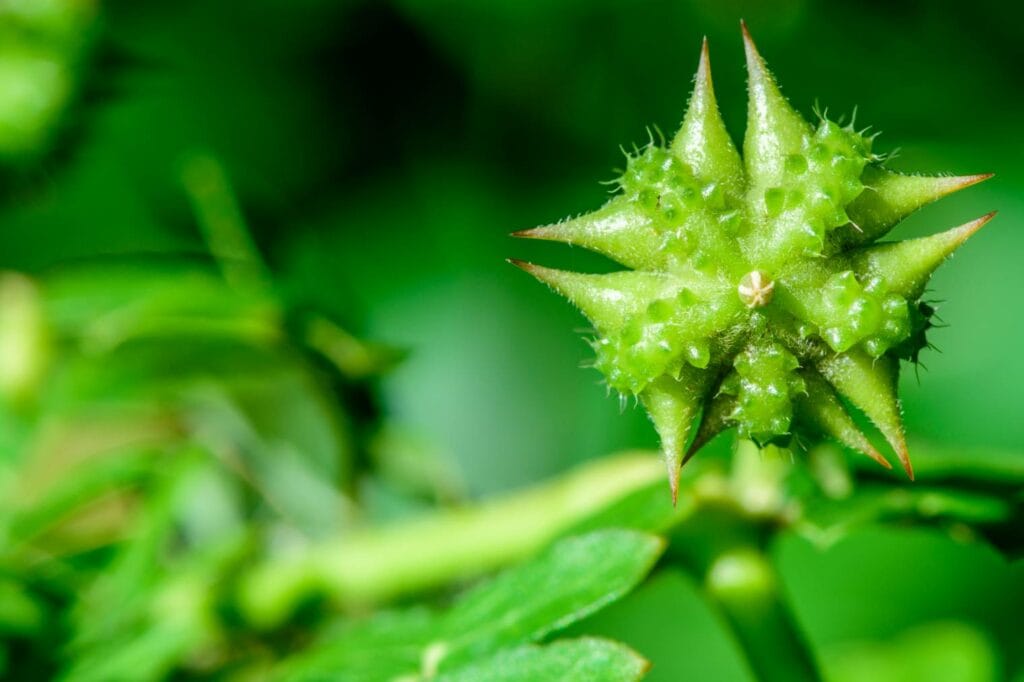
| Scientific Name | Tribulus terrestris |
| Native Family | Zygophyllaceae – Creosote-bush family |
| Other Names | Jamaican Fever Plant, Nohu, False Puncture Vine, Spiny-fruited Caltrop |
The caltrop wildflower is grown all throughout the world, but you’ll definitely find it in the dry locations of Florida. Surprisingly, this flower can grow where only a few others can survive, thriving even in the driest conditions.
The flower produces a small woody fruit known as the “bur,” which has long and sharp spikes to penetrate any object. The caltrop grows best in the summer. It’s worth noting that this flower is toxic to wild stock and can cause injuries to human beings.
4. Dayflower
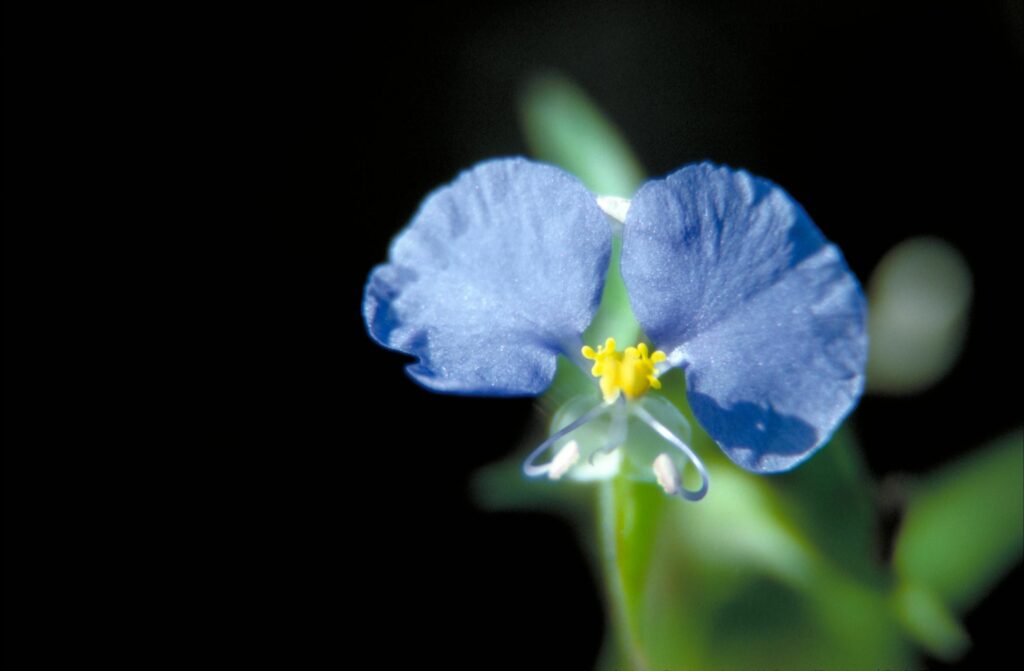
| Scientific Name | Commelina communis |
| Native Family | Commelinaceae – Spiderwort family |
| Other Names | Asiatic Dayflower, Mouse Ears, Dew Herb, Virginia Dayflower |
The dayflower may grow as high as 36 inches, often crawling across surfaces like a vine. It has round, smooth, and hairless stems that grow hairless leaves as long as 5 inches. Each leaf has a sessile or clasping base and a membranous sheath.
Dayflowers produce small one to two-inch flowers that are typically pink or purple. Additionally, these wildflowers are best grown in loamy soil in floodplain forests, thickets, gardens, and yards. Finally, it’s worth noting that these flowers are considered invasive in most states.
5. Elephant’s Foot
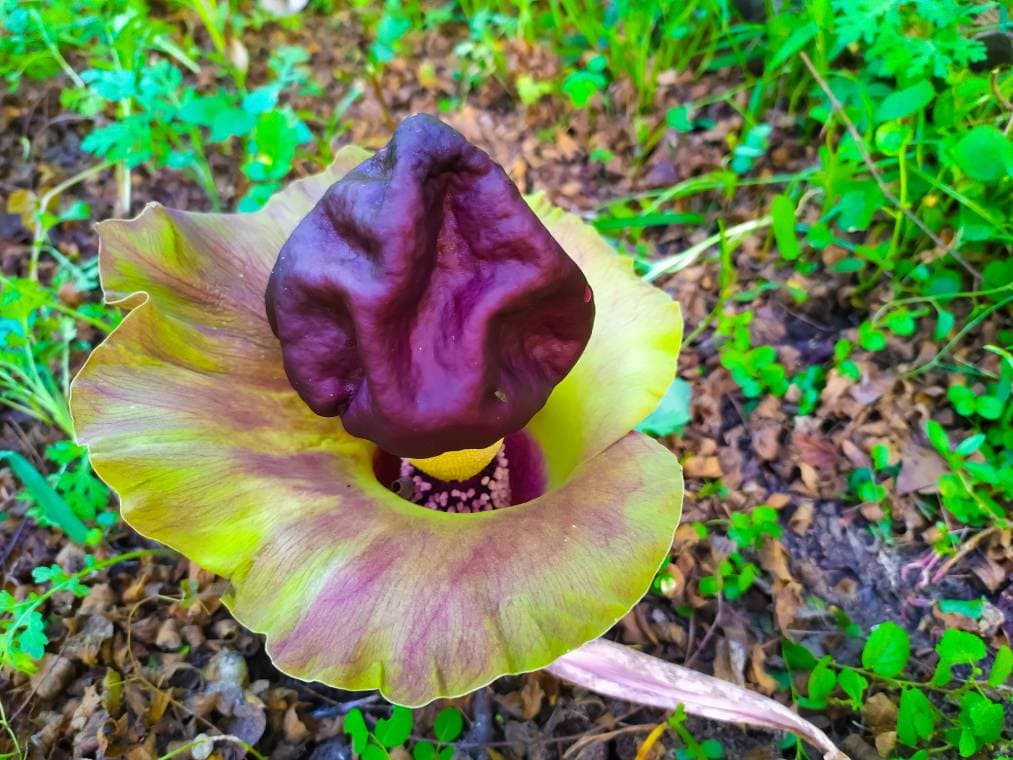
| Scientific Name | Elephantopus carolinianus |
| Native Family | Asteraceae – Aster family |
| Other Names | Carolina Elephant’s Foot, Leafy Elephant Foot |
The elephant’s foot is a reasonably small wildflower, growing no more than 24 inches. Additionally, this perennial wildflower is a type of herb with blooming pink and purple flowers. It’s best grown in the months between August and November.
It’s also worth noting that this wildflower is low-maintenance and easy to grow, so you may plant it in your garden in medium, well-drained soil under partial shade. In addition, despite popular belief, its flowers do not resemble daisies due to their disc-like appearance.
6. Fairywand
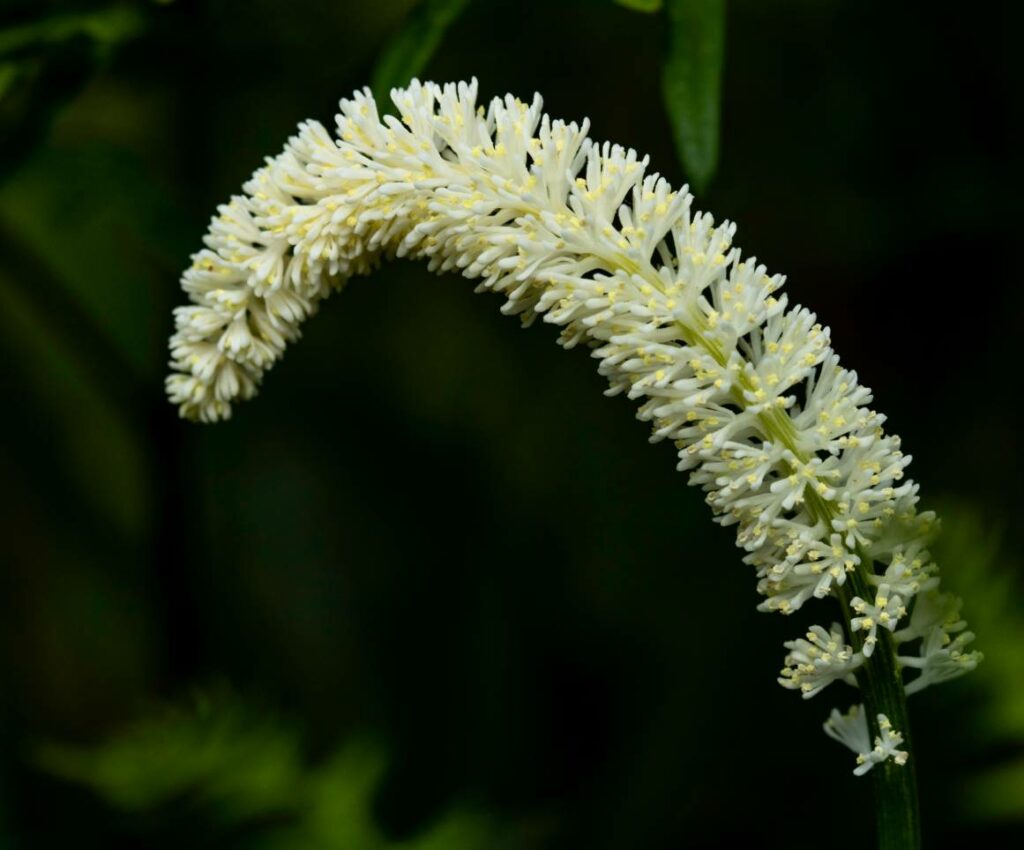
| Scientific Name | Chamaelirium luteum |
| Native Family | Melanthiaceae – False-Hellebore Family |
| Other Names | Fairy Wand, Devil’s Bit, False Unicorn Root, Blazing Star, Grubroot, Squirrel Tail, Rattlesnake-Root |
The fairywand is a small, unusual-looking wildflower that grows to eight inches, providing a beautiful mid-late spring display. It’s a herbaceous perennial plant with white, spindle-shaped flowers that are unlike any you may find in Florida.
In addition, this strange plant also thrives under shade in rich, moist, and acidic woodlands. It also grows its male and female flowers on two separate plants, which is uncommon in perennial flowers. However, its female form is far more attractive.
7. Gentian
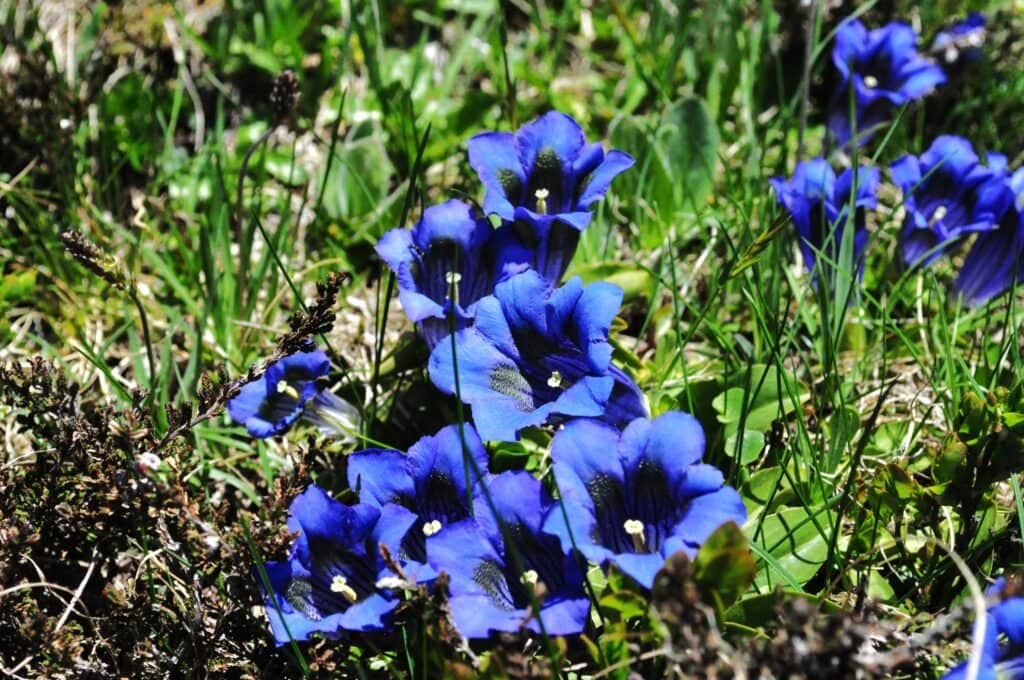
| Scientific Name | Gentiana saponaria |
| Native Family | Gentianaceae – Gentian family |
| Other Names | Soapwort Gentian, Harvestbells, Pale Gentian, Striped Gentian, Sampson’s Snakeroot |
Like baneberry, gentian is a set of flowers from the gentian family found in Florida. In fact, it has scattered over 400 subspecies throughout the state, which makes it a much larger genus than usual.
The flower is named after an Illyrian king who discovered beneficial tonic properties within the plant. These fully hardy plants thrive under full sun or partial shade in well-drained, neutral to acidic soils. You’ll mainly find an abundance of these wildflowers in rock gardens.
8. Hawkweed
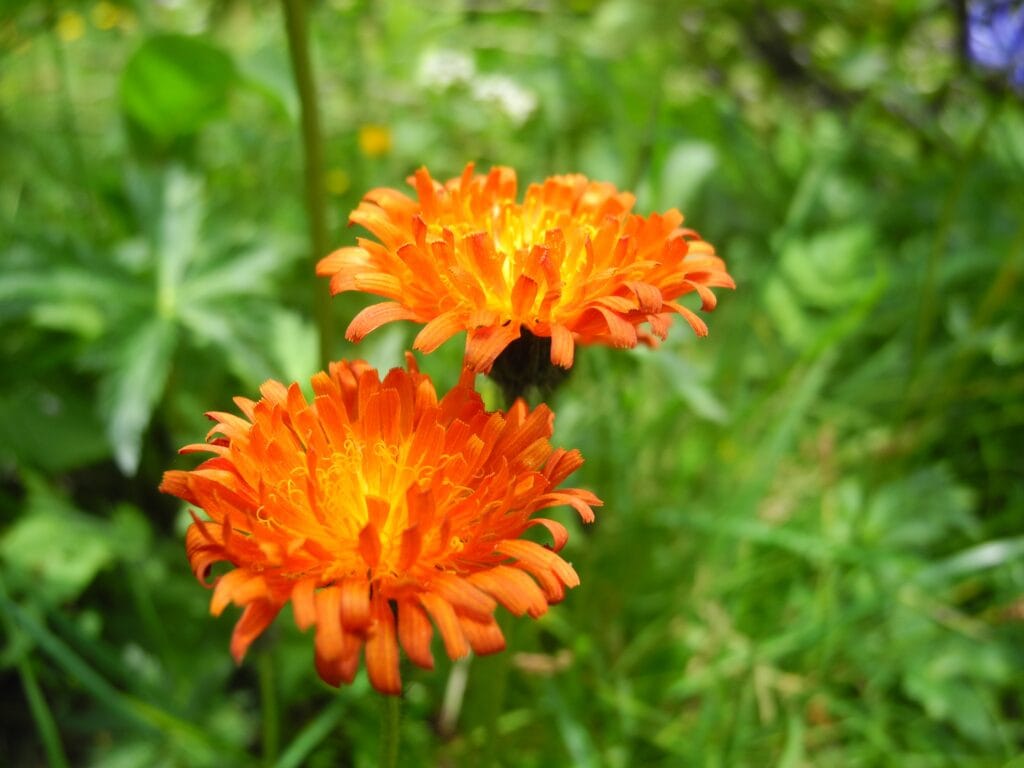
| Scientific Name | Hieracium venosum |
| Native Family | Asteraceae – Aster family |
| Other Names | Rattlesnake Weed, Rattlesnake Hawkweed, Veiny Hawkweed, Orange Hawkweed, Devil’s Paintbrush |
Hawkweed is another genus of wildflowers found in Florida. Part of the aster family, these 100 subspecies include the common hawkweed, mouse-ear hawkweed, and orange hawkweed, as some of the popular ones.
Since these flowers are relatively easy to grow, they’re often grown as garden ornaments, displaying their beautiful orange shades. You may also find this flower in vibrant yellow hues. Additionally, these flowers grow vegetatively past desirable growth, so they may be invasive.
They also don’t have any natural enemies, which is why they overgrow rapidly.
9. Indian Paintbrush
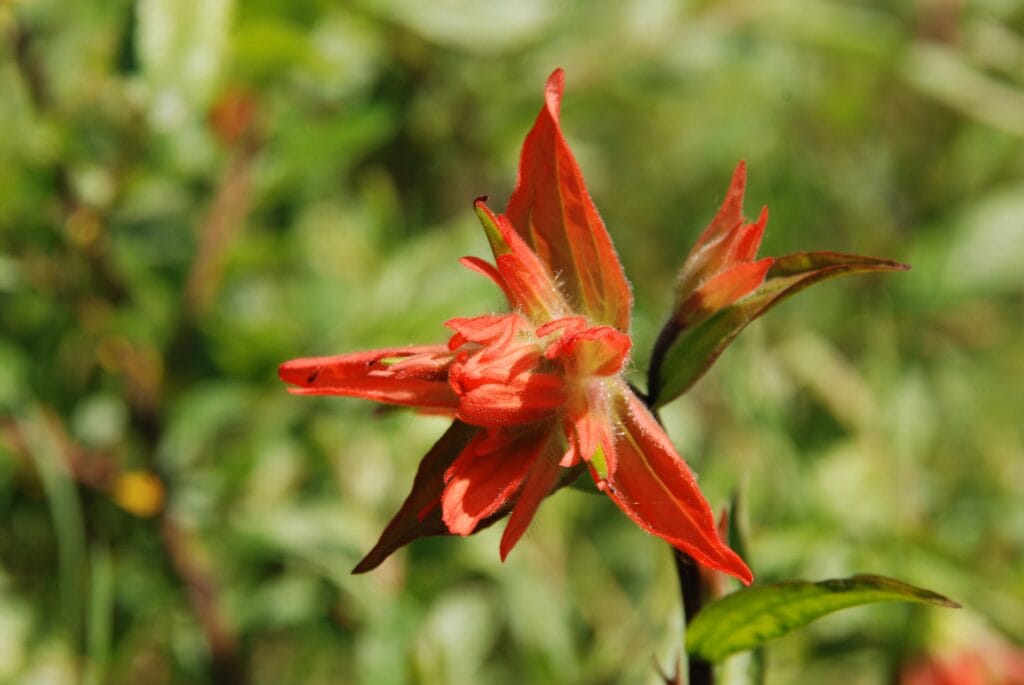
| Scientific Name | Castilleja coccinea |
| Native Family | Orobanchaceae – Broom-rape family |
| Other Names | Scarlet Indian Paintbrush, Scarlet Paintbrush, Painted Cup, Prairie Fire |
While the Indian paintbrush is a beautiful and vibrant flower, it’s part of a parasitic wildflower family. Its showy cup-like bracts give it various nicknames, including “painted cup.” It may look like it blooms red flowers, but they are technically modified leaves that gradient into a bright red.
The actual flower petals of the Indian paintbrush are hardly seen since they’re hidden under the leaves. However, the flower petals are also tipped red like the leaves. You may also find particular subspecies that have yellow tips instead of red.
10. Jimsonweed
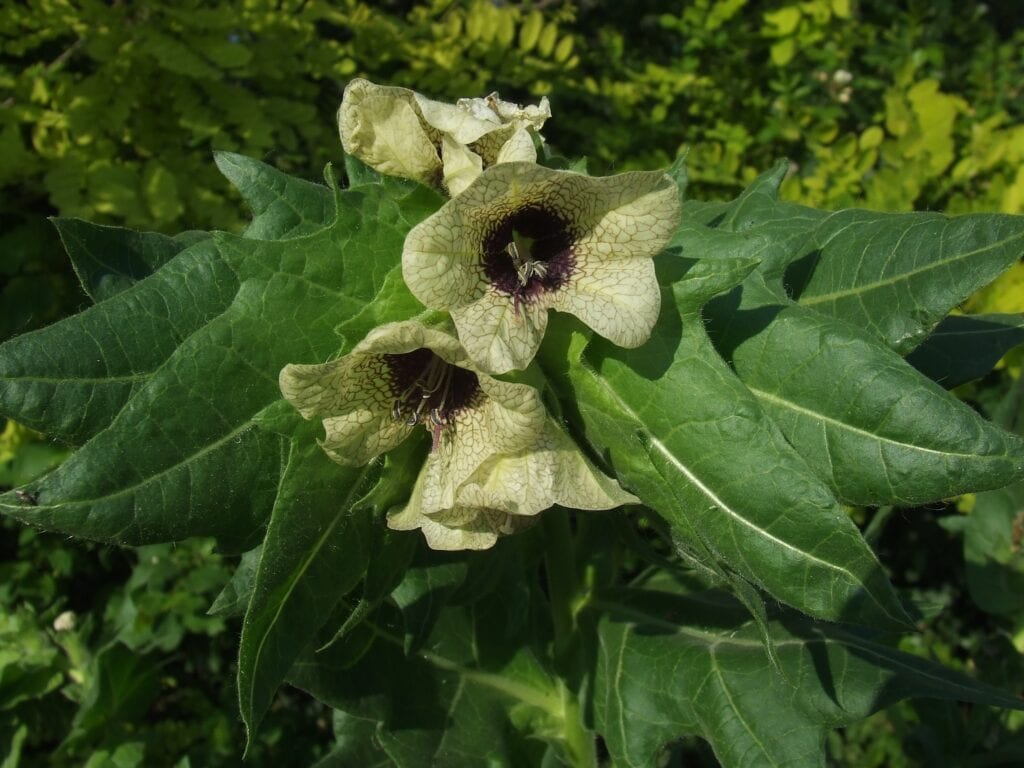
| Scientific Name | Datura stramonium |
| Native Family | Solanaceae – Potato family |
| Other Names | Jamestown Weed, Mad Apple, Moon Flower, Stinkwort, Thorn Apple, Devil’s Trumpet, Sacred Datura, Sacred Thorn-apple, Indian Apple, Angel Trumpet |
Jimsonweed is also known as the devil’s snare due to its hallucinogen and poisonous nature. But, of course, being part of the nightshade family, this plant is bound to have specific negative characteristics.
Since the leaves are packed with potent alkaloids, it’s advised never to consume any part of this poisonous plant. It can grow as tall as 80 inches, so it’s hard to miss this plant in the wild. Lastly, it produces relatively large white or violet trumpet-shaped flowers.
11. Kudzu

| Scientific Name | Pueraria montana |
| Native Family | Fabaceae – Pea family |
| Other Names | Vine-that-ate-the-South |
Kudzu is a fascinating perennial vine that crawls, coils, and trails around any surface. Unfortunately, although this plant is mesmerizing and beautiful, it’s considered invasive in most states due to its fast-growing nature.
It’s worth noting that kudzu definitely isn’t a garden-friendly plant. In fact, it grows so rapidly over other plants that it ends up smothering and killing them. In addition, it blocks most of the sunlight, which is why it’s considered an invasive noxious weed.
12. Larkspur

| Scientific Name | Delphinium carolinianum |
| Native Family | Ranunculaceae – Buttercup family |
| Other Names | Carolina Larkspur, Blue Larkspur, Glade Larkspur, Prairie Larkspur, Pine Woods Larkspur |
Larkspur is a beautiful and versatile flower best suited for your garden, especially as an amateur gardener. Known as a classic cottage garden staple, this plant produces blue, pink, purple, white, and red flowers.
This plant may grow up to 18 inches tall when fully bloomed, especially in partial sun. Not only are these plants incredibly low maintenance, but they’re also suitable for containers and produce deer-resistant flowers.
Plus, larkspur is typically drought tolerant, which means you can grow it in extreme heat conditions.
13. Mayapple
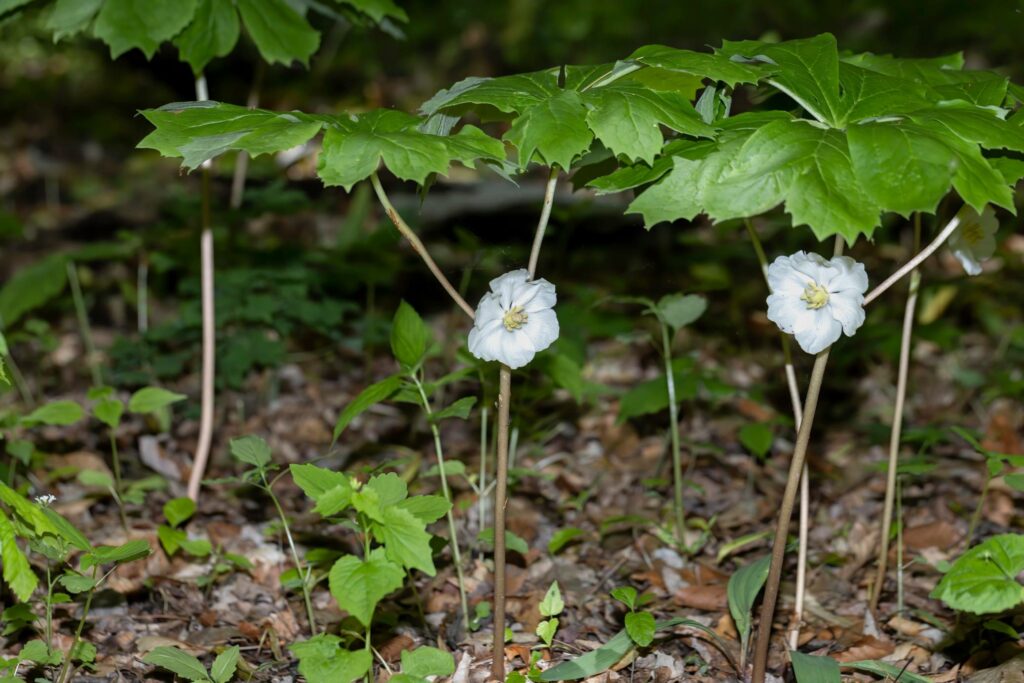
| Scientific Name | Podophyllum peltatum |
| Native Family | Berberidaceae – Barberry family |
| Other Names | None |
The mayapple is known for its deeply lobed, umbrella-shaped leaves. You’ll typically find them in open deciduous forests, shady fields, riverbanks, and roadsides. Surprisingly, all parts of the plant except the fruit are toxic but can be used for medicinal purposes.
The plant can grow nearly 18 inches tall, forming large and dense colonies in the wild. Plus, they typically bloom in early spring, with white and rose-colored 2- to 3-inch flowers appearing in April and May.
14. Nightshade
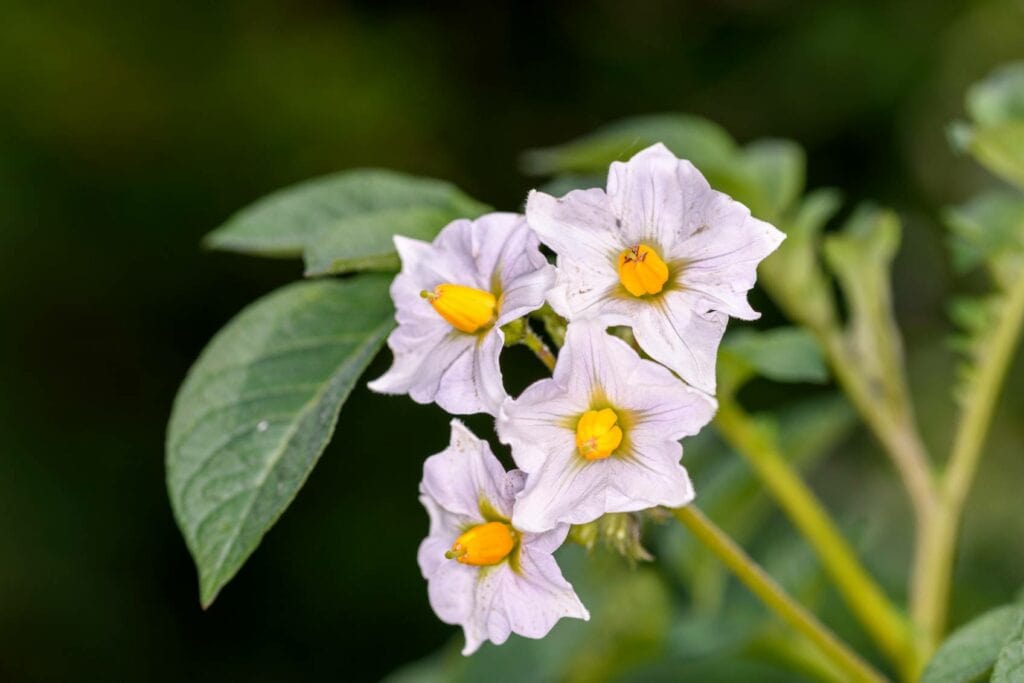
| Scientific Name | Solanum carolinense |
| Native Family | Solanaceae – Potato family |
| Other Names | Carolina Horse Nettle, Bull Nettle, Devil’s Tomato, Climbing Nightshade, Bittersweet Nightshade, Woody Nightshade, European Bittersweet, Fellenwort, Blue Nightshade |
Nightshades are also a set of flowers, including perennial and annual herbs, vines, shrubs, trees, epiphytes, and weeds. Most members of this family have potent alkaloids, which is why most of these plants are highly toxic.
However, this family also includes tomatoes, potatoes, eggplant, bell, and chili peppers. Other than that, nightshade plants typically produce berries which can be deadly when consumed. We wouldn’t recommend planting this flower in your garden if you have children or pets.
15. Onion

| Scientific Name | Allium canadense |
| Native Family | Amaryllidaceae – Amaryllis family |
| Other Names | Wild Garlic, Meadow Garlic |
Also known as meadow garlic, the Canadian onion plant is a perennial culinary herb. Its thick skin is covered in brown fibers, while the plant itself emits a strong onion smell and taste. This plant grows star-shaped white or pink flowers, which are soon replaced by bulblets.
It’s also worth noting that regular bees and insects pollinate these hermaphroditic plants. So, if you’re into cooking with delicious aromatics, this is the perfect wildflower to grow in your backyard.
 Conclusion
Conclusion
Florida is known for its official wildflower, Genus Coreopsis, which is a vibrant yellow and red flower of the Asteraceae family. However, there is more to the Florida Wildflower Foundation as the state grows over 300 types of wildflowers.
From nightshades and wild petunias to mayapples and fairy wands, these flowers are grown on the state’s roadsides and forests. Now that you know about the most popular wildflowers found in Florida, you can identify them quickly and even grow some in your backyard.
Featured Image Credit: Tiffany K, Shutterstock
Contents
 The 15 Wildflowers in Florida
The 15 Wildflowers in Florida